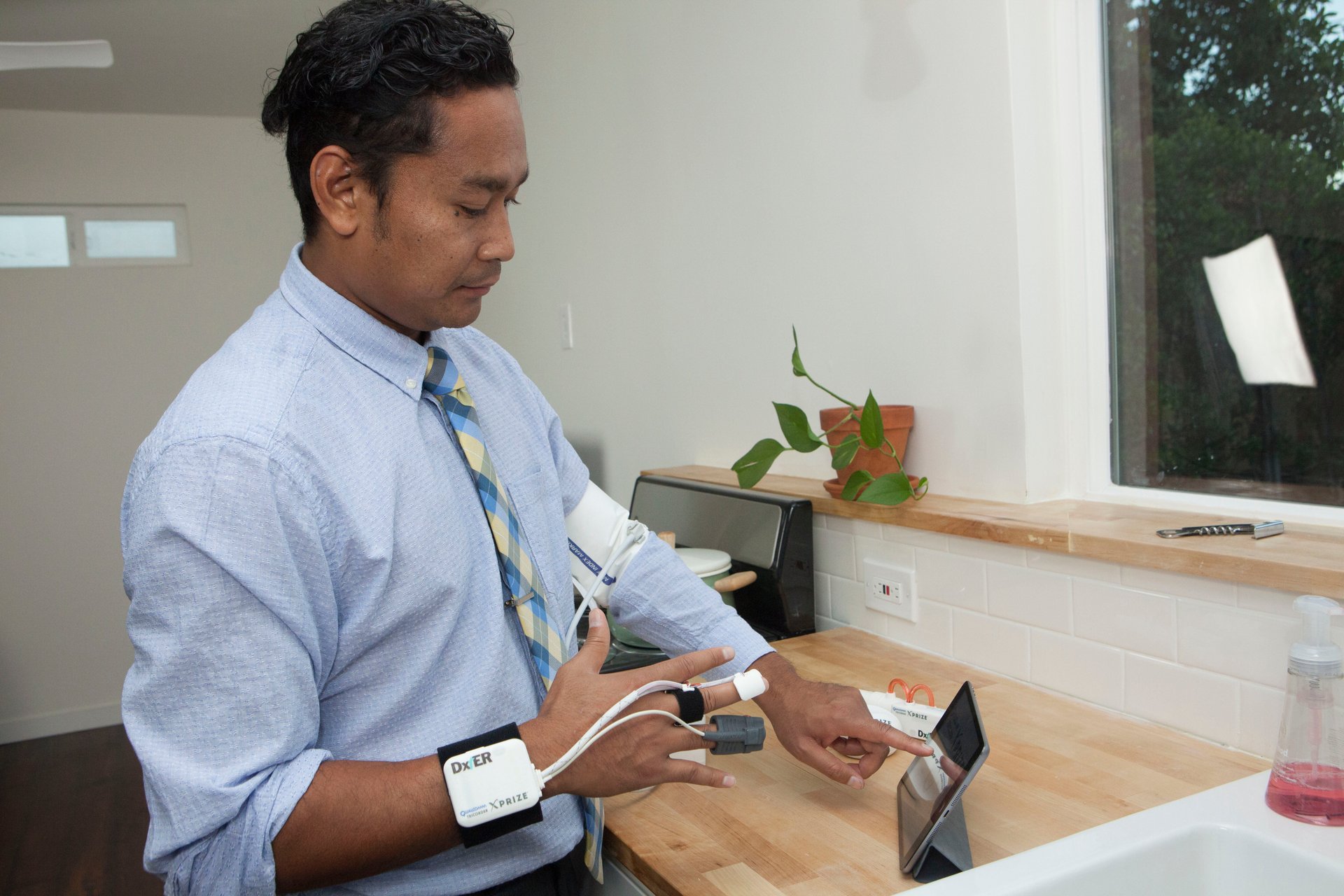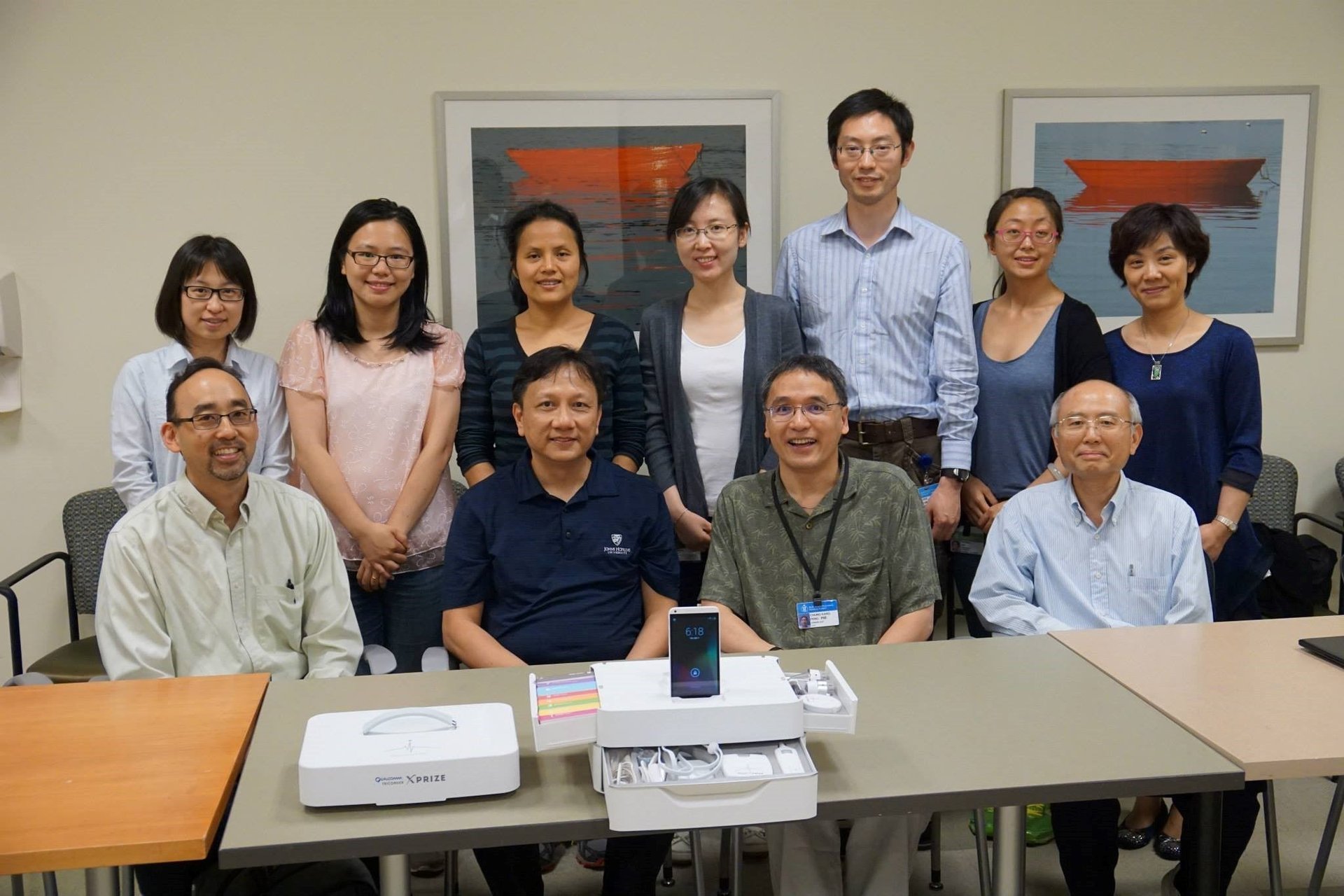Two teams of scientists have prototyped a medical device modeled on Star Trek’s “tricorder”
As they boldly went where no one has gone before, the crews of the USS Enterprise often found that it was extremely useful to have a small device that could diagnose any ailment just by waving it near a person or alien—the tricorder.


As they boldly went where no one has gone before, the crews of the USS Enterprise often found that it was extremely useful to have a small device that could diagnose any ailment just by waving it near a person or alien—the tricorder.
This futuristic gadget, much like the tablet computer, voice-controlled machines, and faster-than-light travel, have fascinated generations of science-fiction fans. But while we finally have tablets and some voice assistants that aren’t entirely terrible, most of the fantastical technology in the original Star Trek series still remains elusive to us.
But a competition is underway to create the tricorder, and it’s now in its final stages. XPrize, the nonprofit that ran the competition to get the first privately funded spaceship off the ground, and the chip manufacturer Qualcomm are promising $9 million for the team that creates a device that could diagnose 13 ailments and measure five vital signs at once. It’s less ambitious than Star Trek’s tricorder, but it would still be world-changing if anyone could pull it off.
As well as working to diagnose ailments, the competition requires that these devices be easy to use, as the aim is to eventually sell or give them to the public to use for health monitoring—just as one might use a Fitbit or other health monitor to track one’s heart rate and steps.
Today the organizers announced that two groups of researchers have reached the final of the competition, and one—or possibly both of them—will be awarded the $9 million in prize money in 2017. There were originally 40 teams that entered the competition, which started in 2012, and a team of industry judges whittled those down to just two, XPrize told Quartz.
One group is led by Basil Harris, an ER doctor with an engineering doctorate, and the other by Chung-Kang Peng, a doctor and professor at Harvard Medical School. Both have come up with a solution that essentially relies on a mobile device and Bluetooth-enabled peripherals to measure all sorts of bodily functions with simple tests that anyone who knows how to use a smartphone should be able to conduct themselves.

Harris’s system comprises a series of 3D-printed devices that pair with an iPad Mini. The devices come with a large one-page sheet of information on how to use each item, rather like an Ikea manual for personal healthcare. Harris told Quartz that he was inspired to put his past engineering passions to use, teaming up with his brother, sister, and friends to design and build the devices in their spare time.
Peng’s team is a group of US and Taiwanese scientists, and was sponsored by the Taiwanese electronics manufacturer HTC. The group produced a box that contains a modified HTC smartphone, a series of sensors that connect to the phone over Bluetooth, and various things to poke and prod yourself with, including blood-glucose and urine test modules. The box actually charges all the devices, and a single USB cable charges the box. (One of rules of the XPrize competition was that the system had to be able to monitor a patient’s vital signs for 24 hours, and much like a pair of Apple AirPods or Snap Spectacles, the devices charge through their box.)

Both devices use videos through their mobile devices to explain how each device works—along with printed-out notes and signs—so that theoretically any person could use the machines without any medical training.
Over the next few months, doctors at the University of California, San Diego, will be testing a group of 40 devices produced by each team on groups of people to assess their effectiveness. Trial patients with some of the ailments that the devices are meant to detect will be given the machines to test out (either for a short period of time or overnight), and the teams will be judged on how easily those patents were able to use the devices, and how effectively they diagnosed ailments.
After the tests are completed, XPrize said it aims to announce the winner, or winners, in the second quarter of 2017. Both teams told Quartz that regardless of whether they win, they are intending to move forward their product to see if they could bring it to market.
Both projects will face regulatory hurdles before their products can be sold or distributed. In the US, medical regulation moves slowly and is still grappling with modern technology. XPrize said it had been working with the US Food and Drug Administration (FDA), as the teams developed their products, but the clinical trials and testing required for approvals could mean it would take years to bring a product like this to the market.
Peng said he might be able to more quickly bring his team’s product to China, where there are remote areas of the country with far less access to medical treatment or diagnostic tools than the US, so the regulatory climate may be a little more favorable to a device that could address that problem.
The simple tests that both teams showed me worked without any major hiccups: Peng doesn’t seem to have any melanoma according to his system, and Harris’s heart rate seemed to be about normal, according to his iPad.
Of course, these are not the tricorders of Star Trek (just as our hoverboards don’t hover, and we still don’t have flying cars). But does that really matter? These devices could still have a massive impact on diagnosis, especially in areas with scant medical care.
And, Harris pointed out, we’re still ahead of schedule in turning fiction into a reality. After all, he said, “the first Tricorder [on Star Trek] wasn’t for another 200 years.”